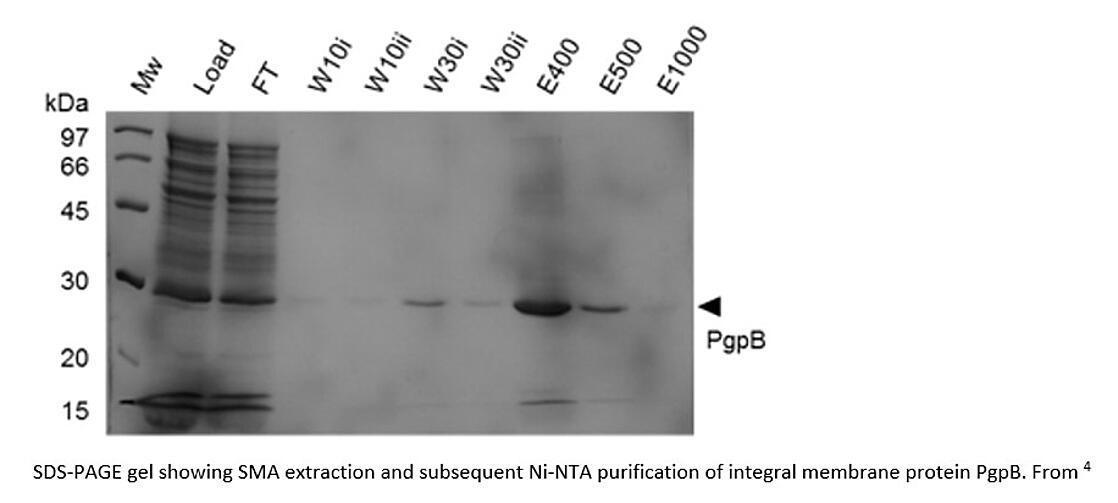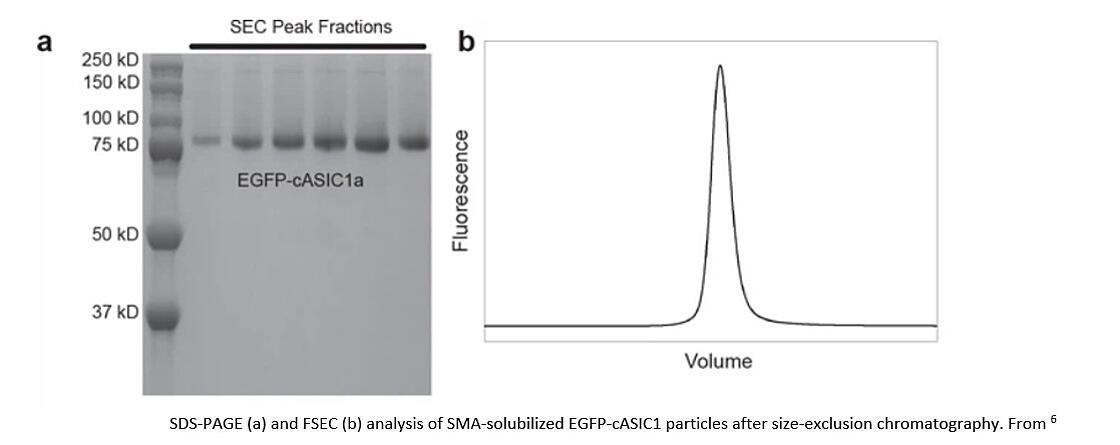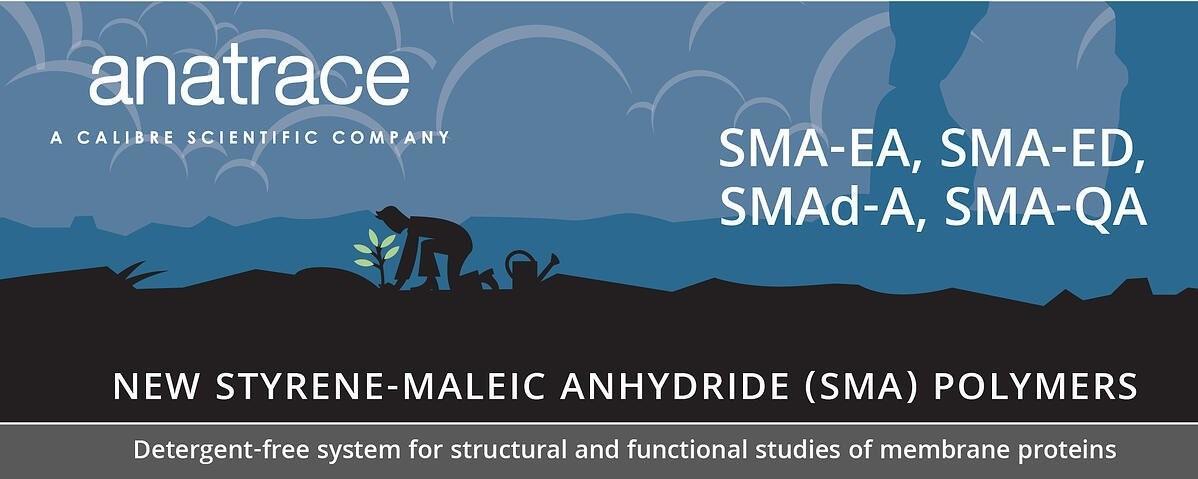Anatrace社 Problems purifying SMALPS? Read on for tips and tricks!
|
Problems purifying SMALPS? Read on for tips and tricks! |
|
 |
|
|
The new amphiphilic styrene maleic acid copolymers (SMAs) enable integral membrane proteins (MPs) to be solubilized into stable 10–30 nm native nanodiscs. In contrast to traditionally used detergents, SMAs do not strip native membranes and essential lipids, do not change lateral pressure (which can be important for MP stability), and are less likely to denature MPs; moreover, they offer new approaches to work with large complexes and assemblies. This opens MPs embedded within native nanodiscs (SMALPs, SMA lipid particles) to studies utilizing cryo-electron microscopy (cryo-EM), transmission electron microscopy, nuclear magnetic resonance spectroscopy, electron paramagnetic resonance, X-ray diffraction, surface plasmon resonance, and mass spectrometry.2 Even so, some SMAs suffer from low tolerance of pH and divalent cations; however, our SMA-EA, SMA-QA, |
|
|
Check out our SMA panel here! We're constantly adding to it with the help of experts in the field! |
|
|
While many publications describe SMALP purification, the technology is new and still evolving, and some people still struggle with it. If you find yourself looking for more clarity in this field, our team is here to help!
We’d like to share some tips and tricks with you that we found in recent literature. We found answers to the most frequent questions in this amazing paper by Broadbent et al.3
For SMALP reconstitution, do I use membranes or whole cells? Both can be used (although membranes are probably better).
Can SMALPs be successfully purified using Ni-NTA? Yes, and we know a great number of examples. See Table 2 here.2 |
|
 |
|
|
Can proteins solubilized in SMAs be resolved on SDS-PAGE? Yes, see image above. Stain with Coomassie—by the way we have a super-fast one! Native gels can be done, too.5 Can I get a good monodisperse sample after purifications of SMALPs? Yes, you certainly can. Most papers combine Ni-NTA with size-exclusion chromatography. Check out our great selection of SEC columns here. |
|
 |
|
|
What if SMALPs get stuck inside the column? Use loose resin rather than a pre-packed column. Some proteins prefer Co2+,7 some Ni2+.8 We have a great selection of loose resins to test for optimum binding conditions!
What if SMALPs don’t bind to your column? Several avenues exist in this case:
|
|
|
FIND MORE TIPS HERE! Learn about managing salt in the buffer, extraction time, SEC optimization, and more. |
|
|
As usual, don’t hesitate to send your questions to our team at customerservice@anatrace.com or |
|
|
Fount of Information は、新商品、新規取扱メーカーなどの情報をいち早く紹介するコンテンツです。情報発信のスピードを重視しているコンテンツのため、現時点で法規制や取り扱いを確認できていない商品、定価を設定できていない商品があります。ご要望やご照会を受けた商品について、法令整備や在庫の充実を図ります。



